BuzzFeed's Guide To Making The Ultimate Chocolate Chip Cookies
We tested every possible variable from sugar type to dough temperature in an attempt to develop the best chocolate chip cookie recipe. Here's everything we learned. #BFChocolateChipCookie
Welcome to BuzzFeed's Best Chocolate Chip Cookie Guide. Over the past few weeks we've baked over 400 cookies — testing every possible variable from dough temperature to sugar variety in an attempt to find the best possible formula.
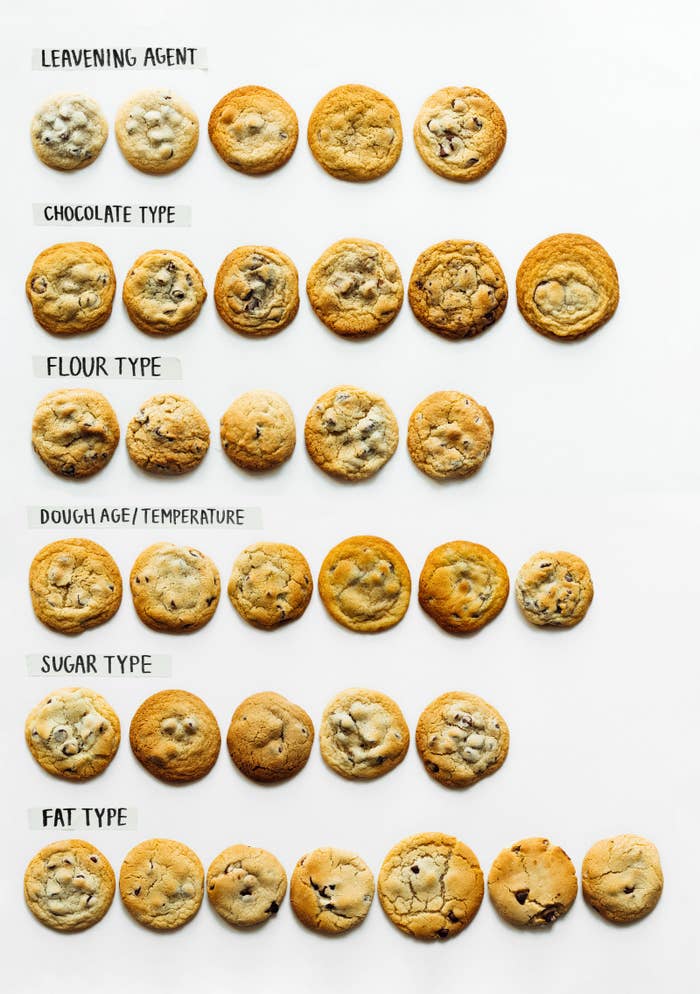
Baking cookies is a science. Each ingredient serves a purpose and is a tool that helps you achieve a desirable result. But understanding how each ingredient affects the outcome of a cookie can be confusing. After all, does anyone really know the difference between baking powder and baking soda?
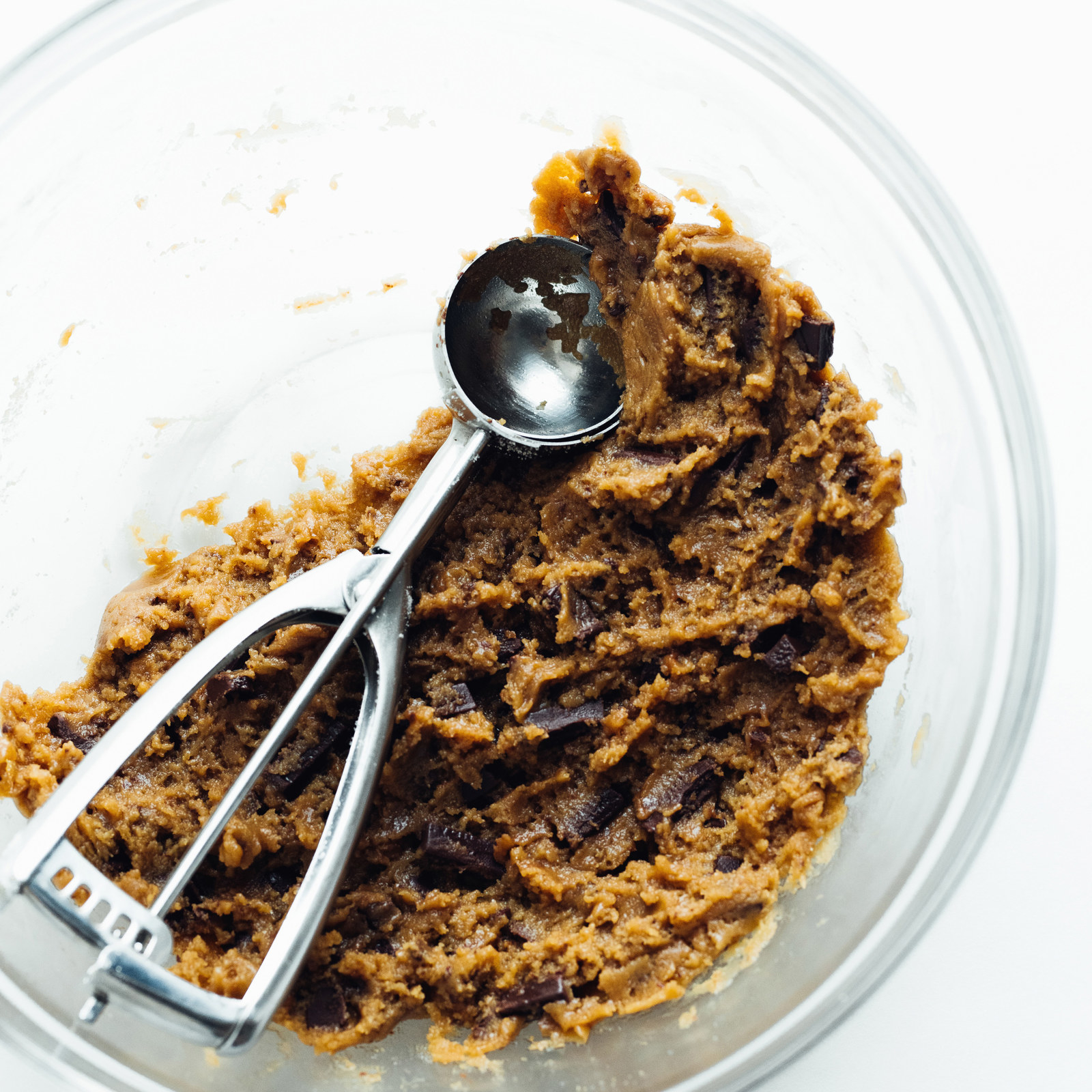
To better understand the science of baking cookies — and hopefully come up with a recipe of our own — we decided to bake countless batches over the span of a week and compare them in side-by-side taste tests. Jesse (an avid cookie baker) took on the task of baking everything, and Lavanya led the research side of things and dove deep into the science of it all:

Here's how we did it: We used the classic Nestlé Toll House cookie recipe as our control formula and performed a series of six tests — each changing up one key ingredient – to determine how each ingredient can change the outcome of a cookie (for better or worse). We wanted to determine if there were simple swaps we could make to reformulate the beloved recipe into something even more delicious.
But before we got started, we spoke to some baking experts — Zac Young, pastry director for Craveable Hospitality Group, and Anna McGorman, director of culinary operations for Milk Bar — to provide some insider knowledge as to how each ingredient affects the final outcome. Their insights helped us decide what experiments we should perform, and the different variables to test.
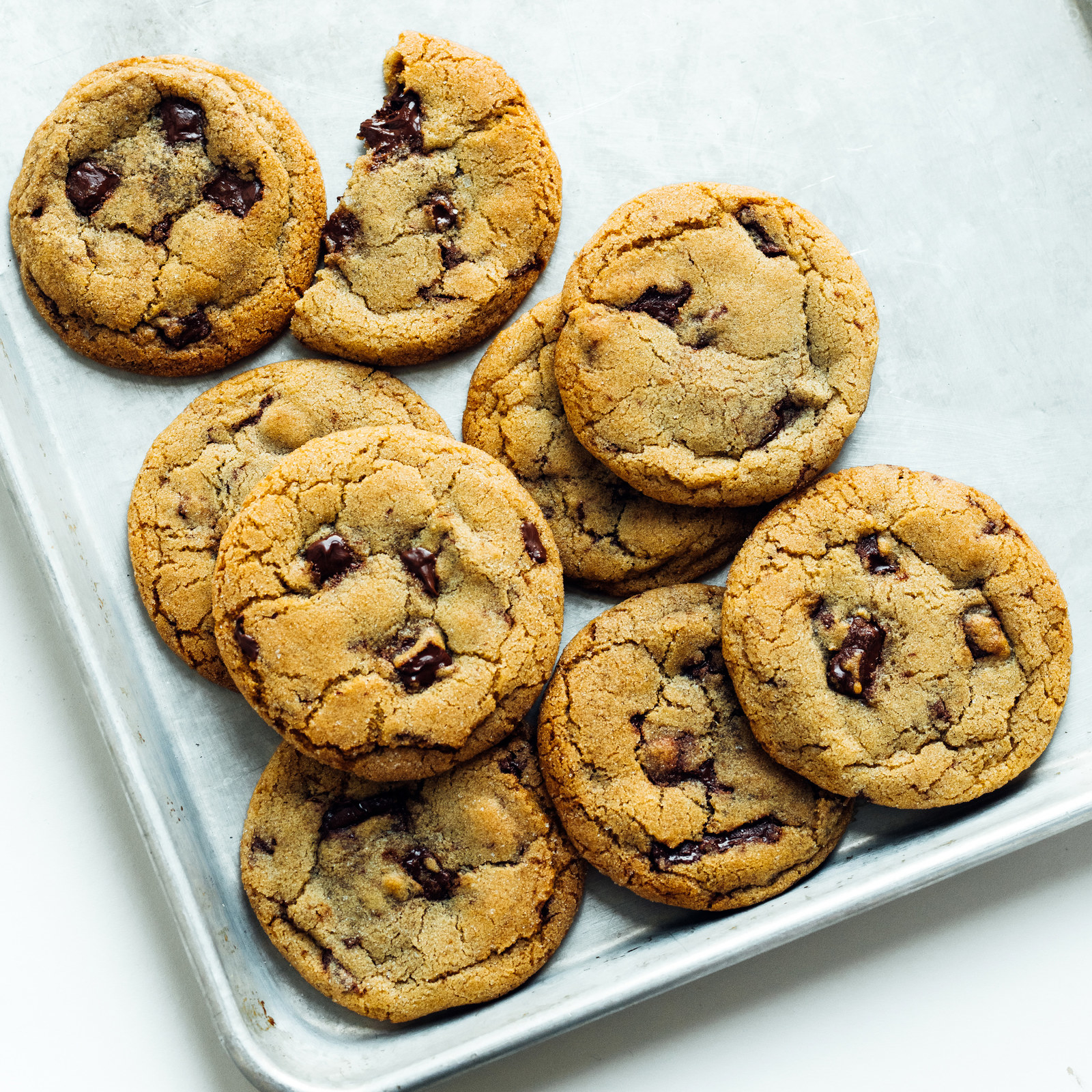
So after hundreds of cookies, countless bad batches, and many upset stomachs, we came up with our own updated version of the Nestlé Toll House recipe using everything we learned through trial and error. We encourage you to read through each test to fully understand how we landed on our “perfect” formula — but we also won't judge you if you skip straight to the recipe itself. (Just make sure to tag your photos #BFChocolateChipCookie if you end up making them.)
*Some quick disclaimers: Our definition of a "perfect" cookie is one that is chewy and soft with a crisp exterior — so this is what we aimed for. We also understand that human error and environmental factors can skew test results, so some of these outcomes can be attributed to these factors.
If you can't see the sign-up box above, just enter your email address here. So, are you ready to nerd out on some cookie science?
Here are the six variables we put to the test, and what we learned from each experiment:
Sugar Type:
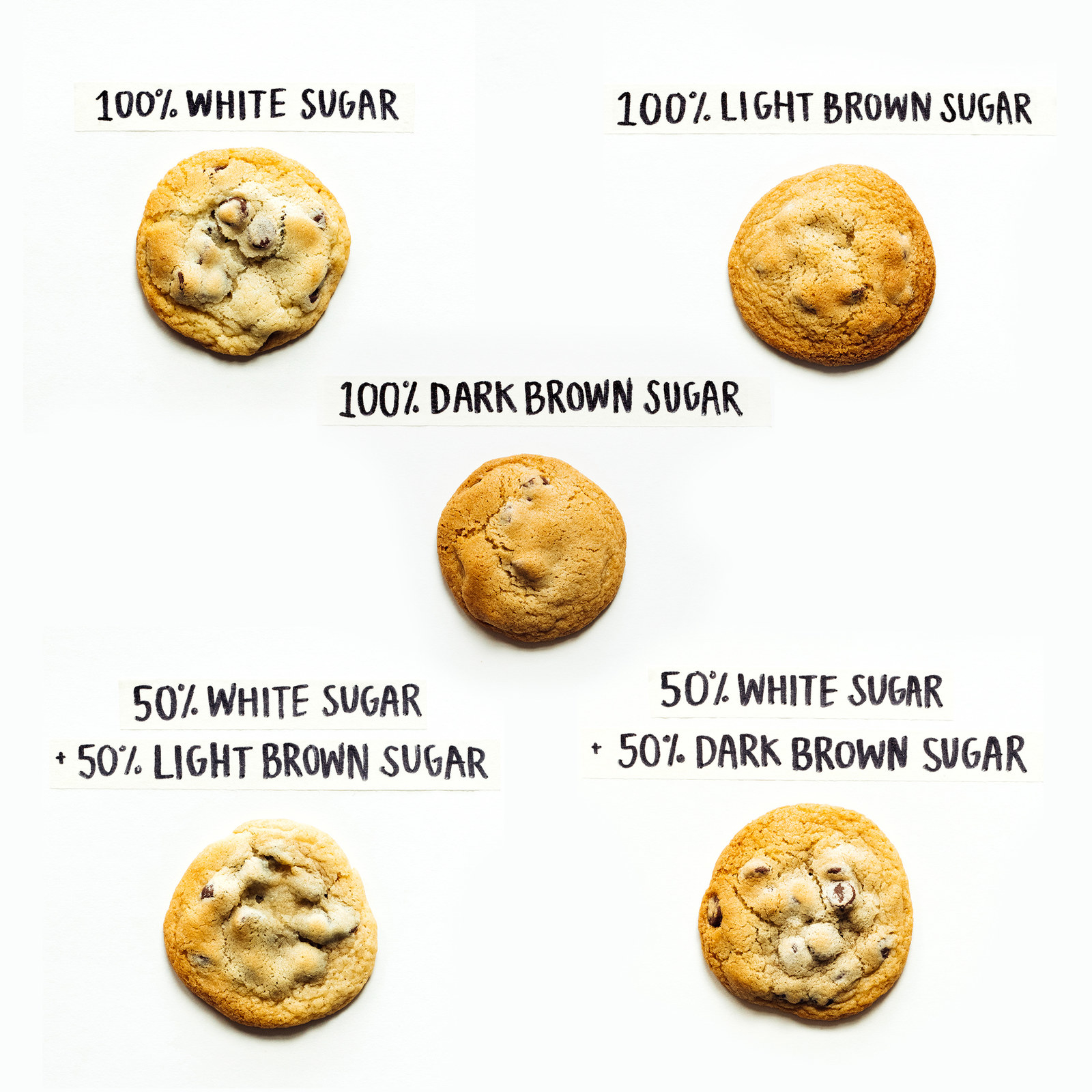
While most people stick to the classic combination of light brown sugar + white sugar, we wanted to test out some other options to see if there was room for improvement.
The variables we tested:
100% White Sugar
100% Light Brown Sugar
100% Dark Brown Sugar
50% White Sugar + 50% Light Brown Sugar
50% White Sugar + 50% Dark Brown Sugar
TL;DR: Sugar can drastically change the flavor, texture, spread, and color of your cookies — so it's not an ingredient you should overlook. Brown sugar is slightly acidic, so cookies made solely from it reacted with the baking soda and created slightly cakier cookies — but they also proved to be a bit too dark. On the other hand, cookies made with 100% white sugar spread too much, had no flavor, and were pale and unsightly. Our solution? A combination of 30% white sugar mixed with 70% dark brown sugar. This way we got the rich molasses flavor and a desirable texture and spread.
Read more: Which Sugar Is The Best For Making Chocolate Chip Cookies?
Fat Type:
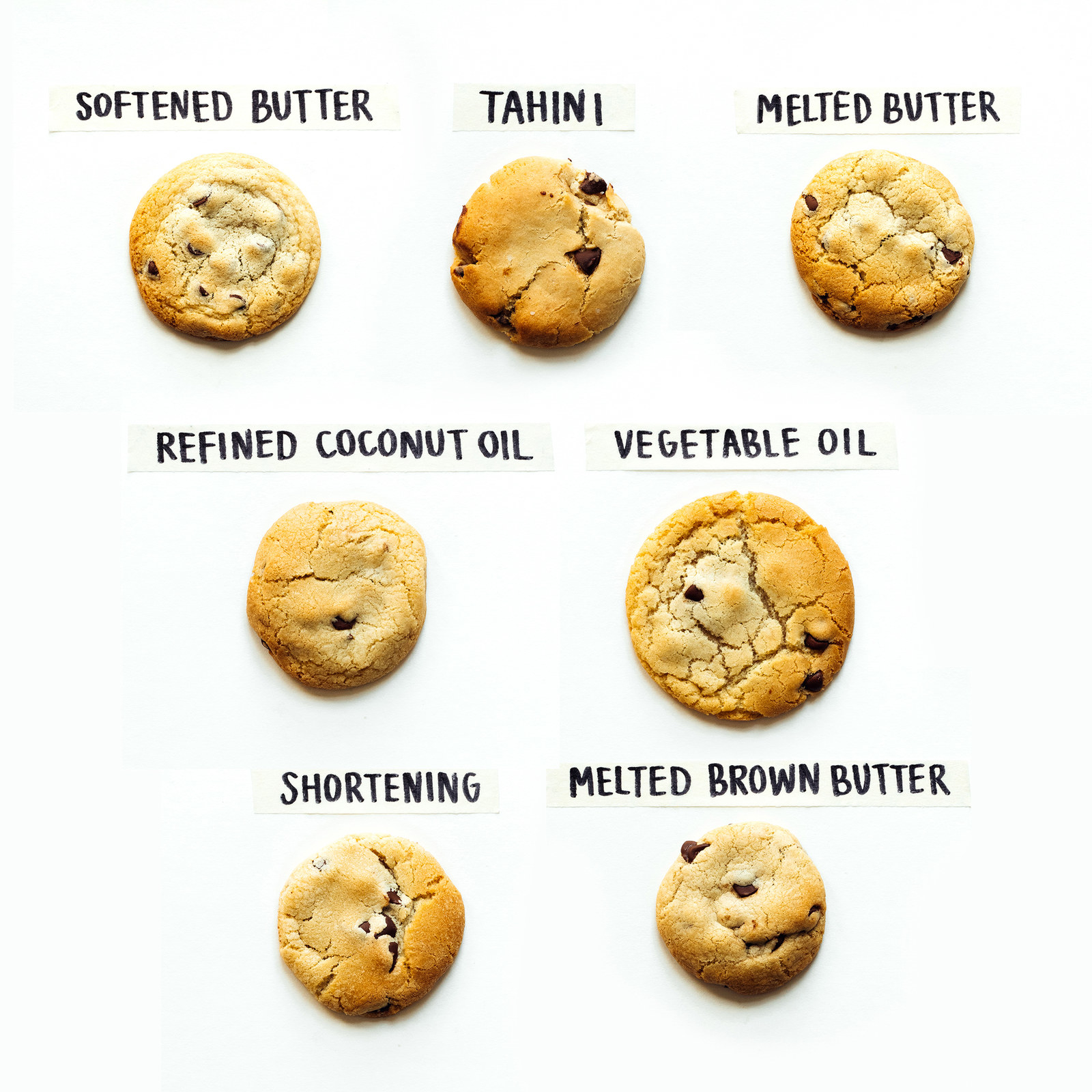
Butter is one of the building blocks of cookies — and in many recipes, it's used as both a fat source and a leavening agent when creamed with sugar. But what happens when you swap in another type of fat and ditch the creaming method altogether? We decided to test it out.
The variables we tested:
Softened Butter
Melted Butter
Melted Brown Butter
Shortening
Vegetable Oil
Tahini
Refined Coconut Oil
TL;DR: Fat not only gives cookies favor, but significantly impacts their spread — so choose wisely. Many fat sources contain a decent amount of water (such as butter), so you can't just swap one fat source out for another without making some tweaks to the recipe. Otherwise, the cookies may turn into dry little pucks (as was the case with brown butter — where some of the water was cooked out during the browning process). The unexpected success in this test? Vegetable oil. It gave the cookies a soft, chewy texture with beautiful cracks. So to get that wonderful texture and the flavor from butter, we used a 50/50 mixture of the two in our final recipe.
Read more: Which Fat Is The Best For Making Chocolate Chip Cookies?
Flour Type:
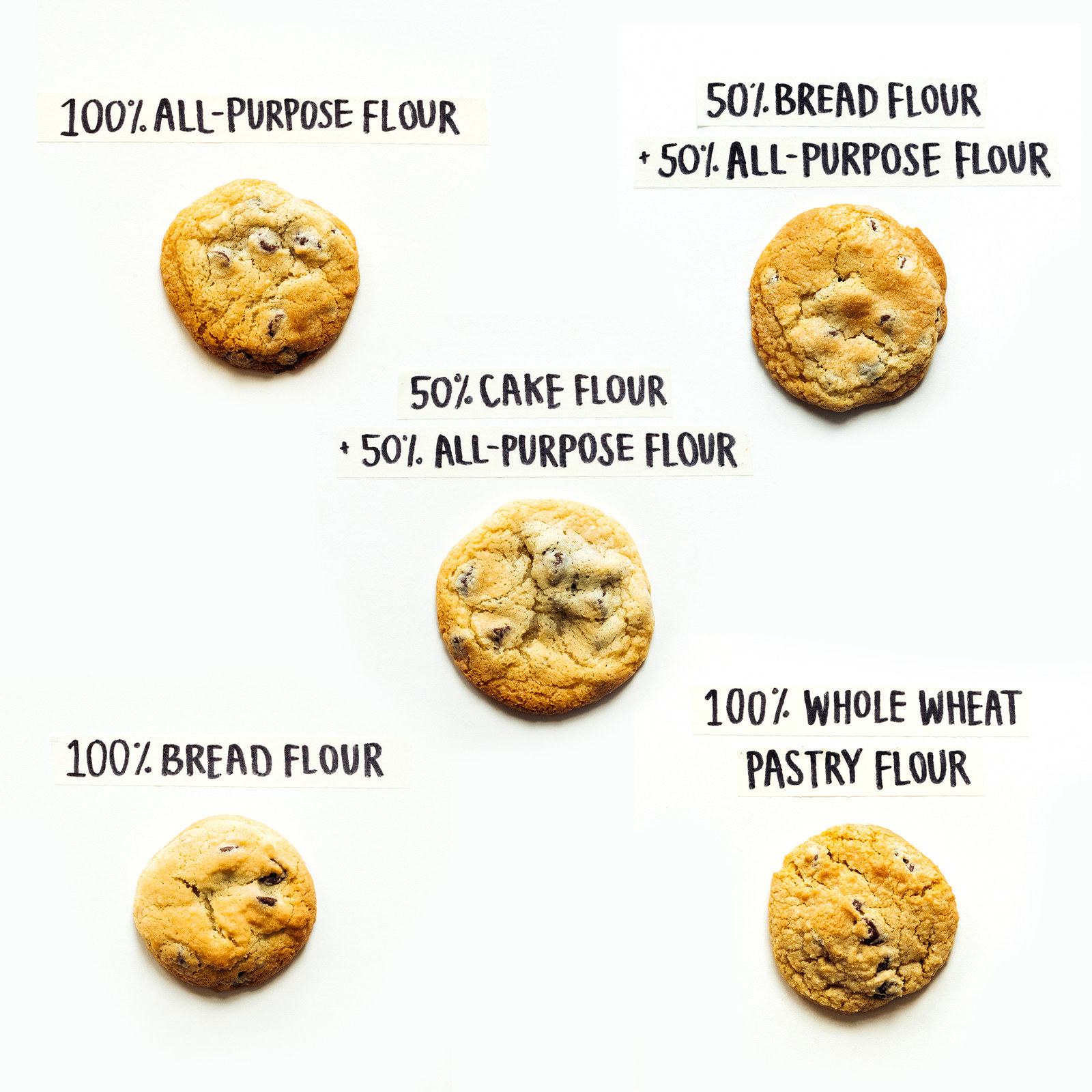
Chefs have been singing the praises of using alternative flours (and combinations of flours) for making chocolate chip cookies for years — claiming you can significantly alter the texture of your cookies with just a simple flour swap. To put this theory to the test, we put five popular flour types (and combinations of flours) to the test.
The variables we tested:
100% All-Purpose Flour
100% Whole Wheat Pastry Flour
100% Bread Flour
50% Cake Flour + 50% All-Purpose Flour
50% Bread Flour + 50% All-Purpose Flour
TL;DR: High-protein flours (such as bread flour) resulted in chewy cookies, while low-protein flours (like cake or pastry) give us a softer, more delicate texture. Cookies made with 100% bread flour were actually too chewy, but it showed promise. Our solution? A combination of 50% bread flour and 50% AP flour to give us perfectly chewy cookies that aren't too chewy.
Read more: Which Flour Is The Best For Making Chocolate Chip Cookies?
Chocolate Type:
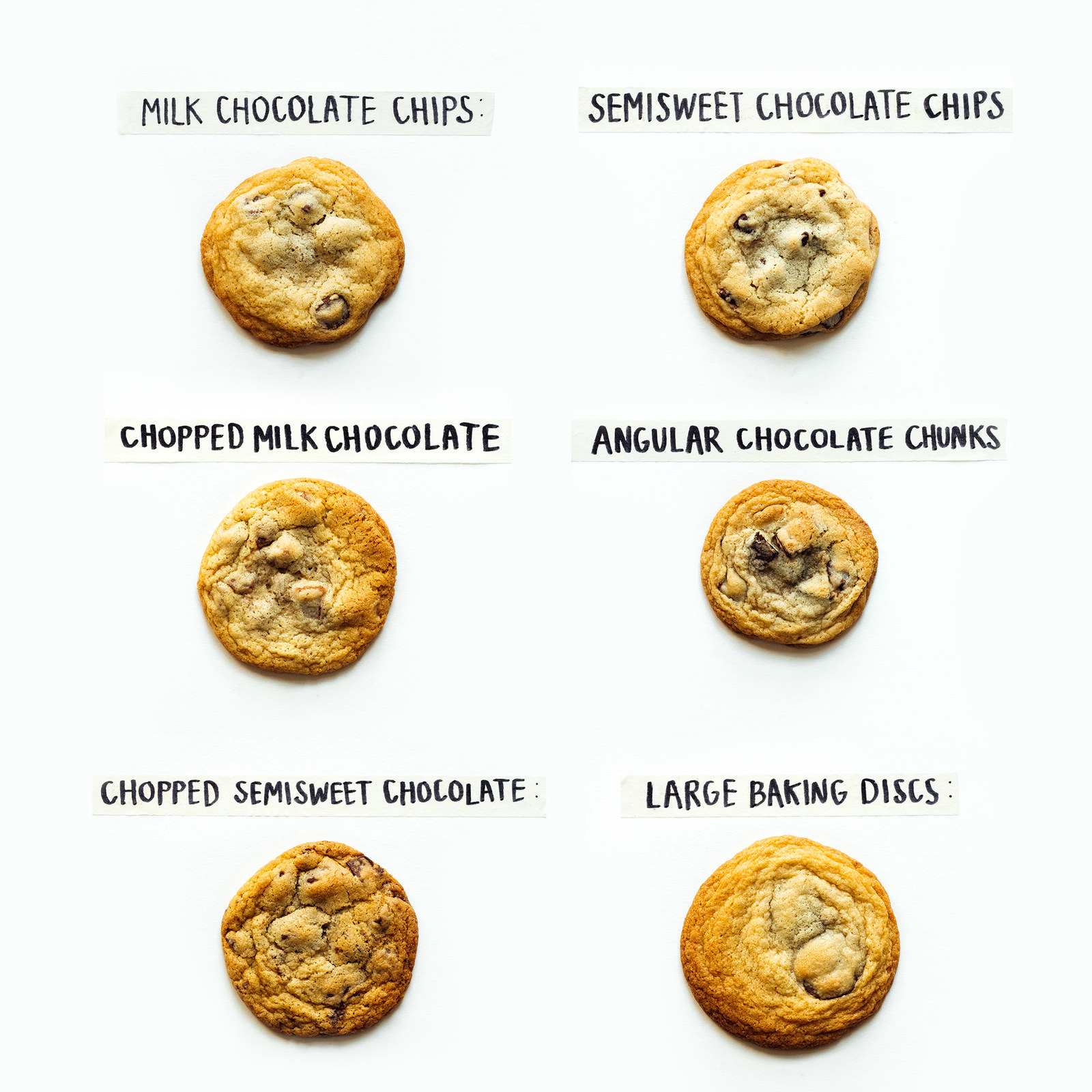
Arguably the most important test of all: chocolate. From chips to chopped to giant baking discs, we put some of the most popular chocolate varieties to the test to see which one is the best.
The variables we tested:
Milk Chocolate Chips
Semisweet Chocolate Chips
Angular Chocolate Chunks
Chopped Milk Chocolate
Chopped Semisweet Chocolate
Large Baking Discs
TL;DR: As it turns out, semisweet chocolate is just the thing to balance out the sweetness of the dough — but the true takeaway is that chopped semisweet chocolate is the ultimate chocolate of choice. Why? Because the tiny pieces actually melt into the dough and change the texture a bit, making for a denser, more fudge-like center.
Read more: Here's The Best Type Of Chocolate For Baking Cookies (Based On Science)
Leavening Agent:
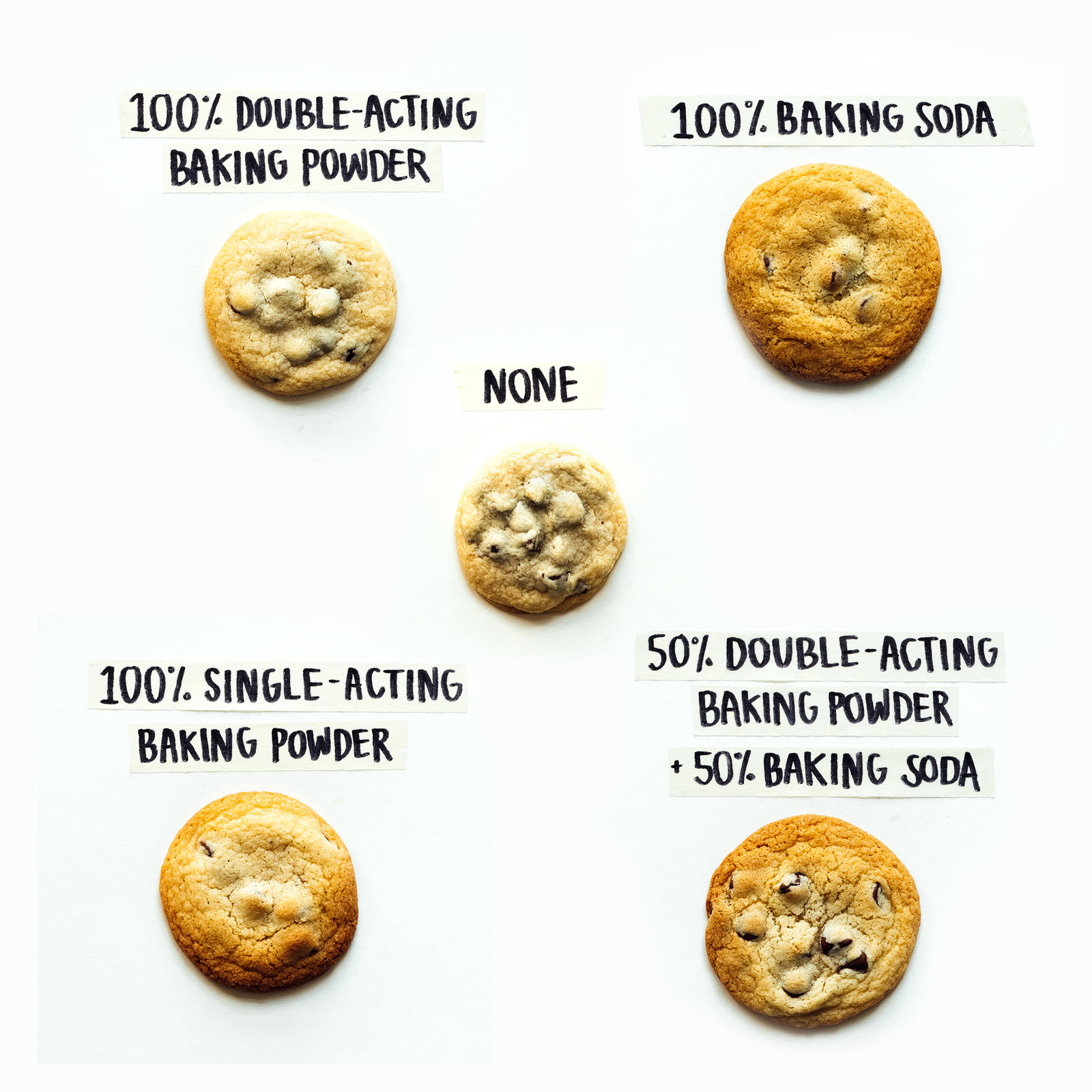
A leavening agent is an ingredient that causes expansion of doughs and batters via a release of gases. These ingredients help make baked goods light and airy, and if used incorrectly or too liberally, can cause cookies to come out cakey.
The variables we tested:
None
100% Double-Acting Baking Powder
100% Single-Acting Baking Powder
100% Baking Soda
50% Double-Acting Baking Powder + 50% Baking Soda
TL;DR: Surprisingly, the type of leavening agent had a significant impact on the color of the cookies as well as their spread and lift. Baking powder made a domed cookie with a lighter color, while baking soda gave them more spread and helped them brown more. The combination of baking soda and powder gave us nice results and a slightly crackly top, but at the end of the day anything made with baking soda worked pretty darn well and didn't result in a cakey cookie.
Read more: Is Baking Soda Or Powder Better For Making Cookies With?
Dough Age + Temperature:
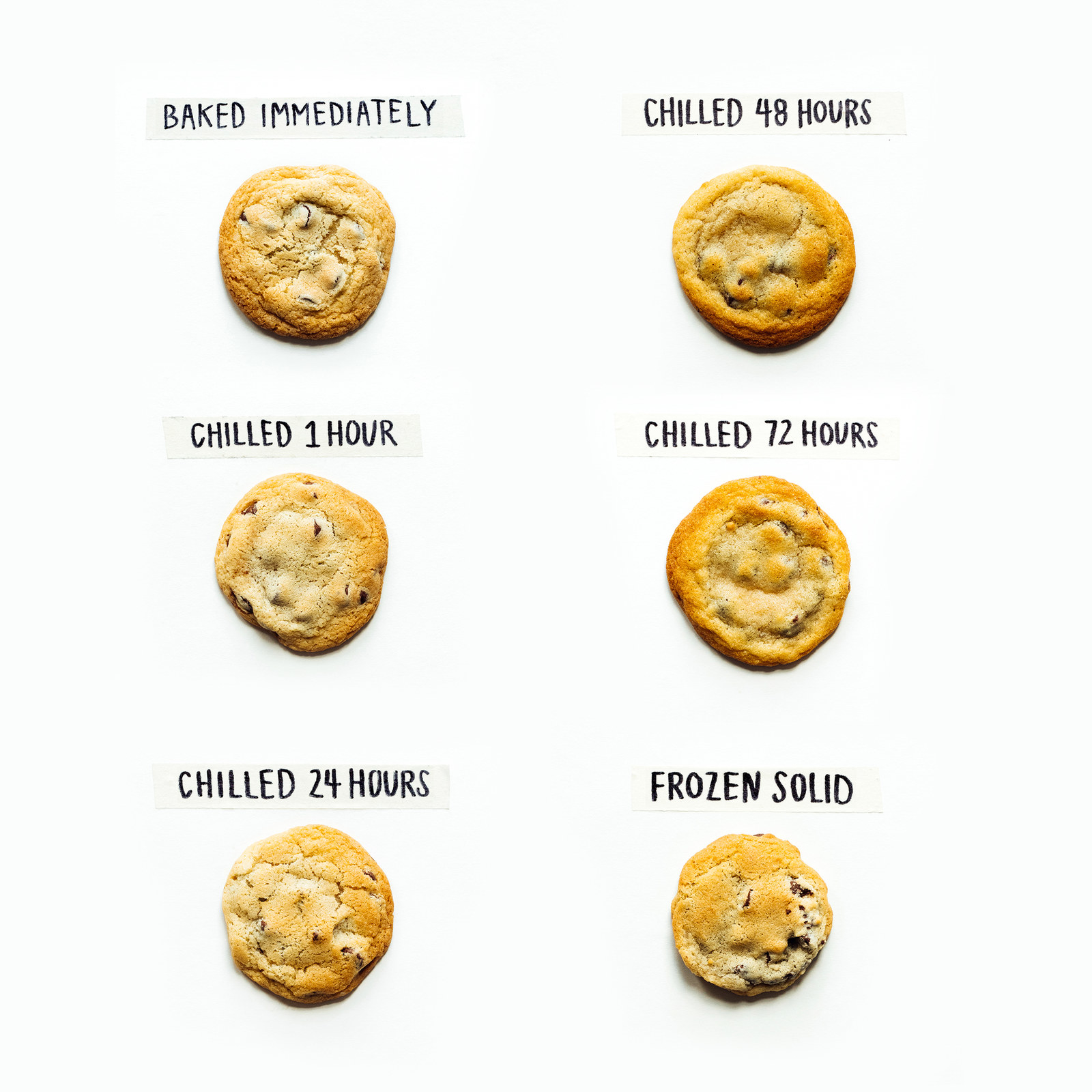
Ripening refers to resting cookie dough in the fridge prior to the baking process. This single act of patience does two things: It changes the texture of the fat (which will change the spread of your cookie), and it allows more time for the flour to absorb the moisture from the eggs. Theoretically (or so we've read online), ripening your dough will give you cookies that brown better, bake evenly, and are more complex in flavor. To test this theory out for ourselves, we baked up five common ripening stages — from a quick one-hour chill to a full three-day rest.
These are the variables we tested:
Baked Immediately
Chilled For 1 Hour
Chilled For 24 Hours
Chilled For 48 Hours
Chilled For 72 Hours
Frozen Solid
TL;DR: Aging the cookie dough didn't seem to change the flavor of the cookies all that much, but it did change their color. The real takeaway here is that the temperature of the dough dramatically affected the spread of the cookies. Colder fat = a slower spread, so if you want to prevent spreading, chill your dough. Otherwise we determined that the time it takes to ripen your dough isn't really worth the wait, and the changes beyond spreading are relatively minor. If you're a super taster, you may be able to notice the difference in flavor, but we had a hard time noticing a difference.
BuzzFeed's Best Chocolate Chip Cookie Recipe:
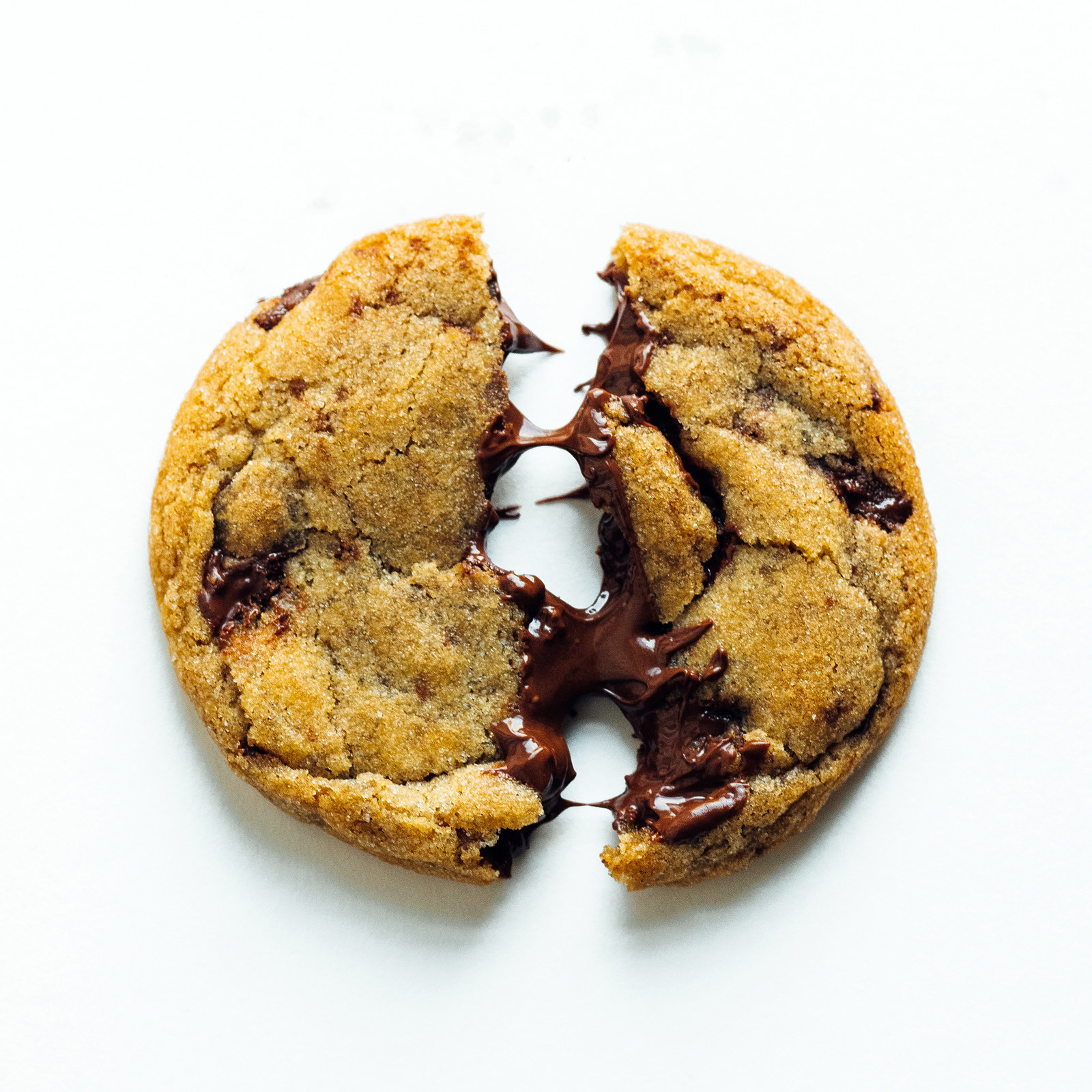
We crammed all of the above lessons into a singe recipe that reengineers the classic Nestle Toll House formula and turns it into something entirely new. What we ended up with was a chocolate chip cookie that is chewy yet crisp, full of deep chocolate flavor, and surprisingly easy to make. There's no need to cream your butter and sugar together, no overnight resting of the dough, and no fancy ingredients. #BFChocolateChipCookie
Ready to get baking? Get our final recipe: BuzzFeed's Best Chocolate Chip Cookie
This post is part of BuzzFeed's Best Chocolate Chip Cookie Guide. To read through the entire experiment, click through the links below:
Sugar Type | Fat Type | Flour Type | Chocolate Type | Leavening Agent | Dough Age + Temperature | BuzzFeed Best Chocolate Chip Cookie Recipe

